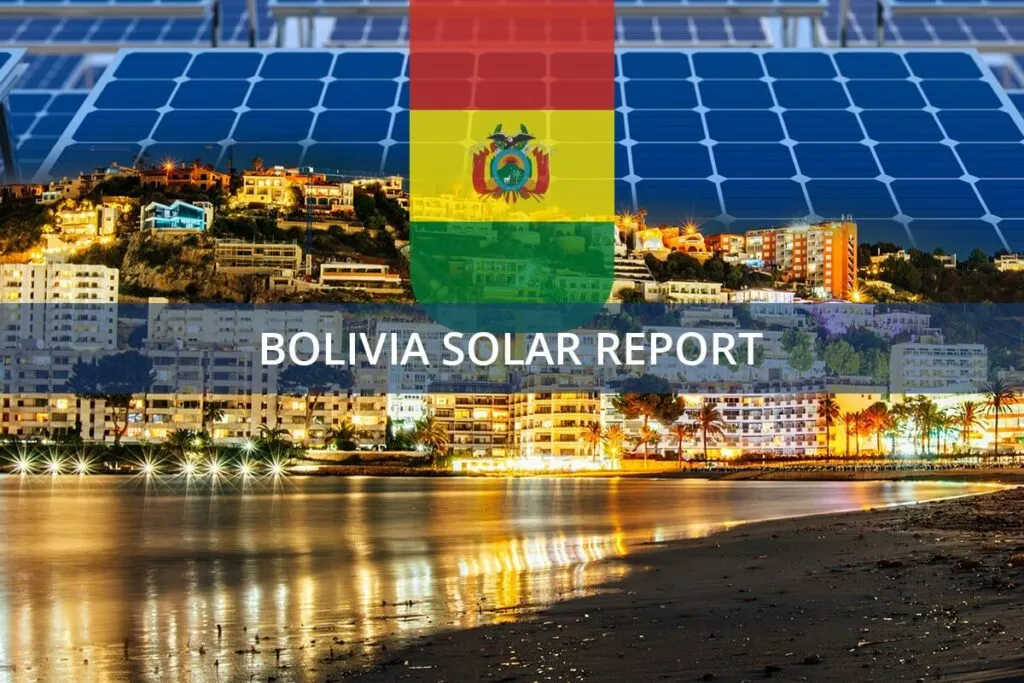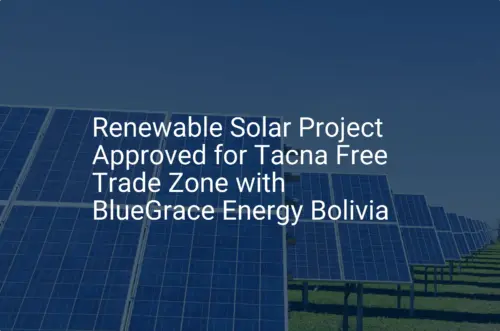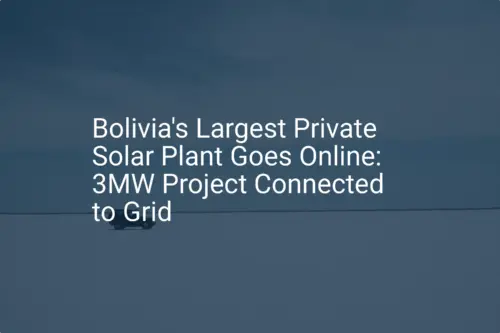Imagine an entrepreneur finalizing a comprehensive business plan for a new solar module factory in Bolivia. The financial models are robust, projecting production costs, labor expenses, and revenue streams. Yet, a critical variable is often underestimated: the true cost and complexity of importing essential raw materials.
Solar cells from Asia, specialized glass from Europe, and aluminum frames from a neighboring country all face a journey culminating at Bolivian customs—a process that can introduce significant costs and delays if not managed properly.
This article provides a practical overview of the import tariffs, taxes, and customs procedures for raw materials used in Bolivian solar panel manufacturing. Understanding this framework isn’t just a logistical detail; it’s a fundamental component of an accurate financial forecast and a realistic project timeline.
Table of Contents
Understanding Bolivia’s Customs Framework for Industrial Imports
All commercial imports into Bolivia are regulated by the Aduana Nacional de Bolivia (National Customs of Bolivia). For any business planning to set up a manufacturing facility, understanding this framework is the first step toward building a resilient supply chain.
The process involves several key stages: the arrival of goods at a designated port or border, submission of a detailed import declaration, verification and potential physical inspection by customs authorities, payment of all applicable duties and taxes, and finally, the release of goods for transport to the factory.
As a landlocked country, Bolivia relies heavily on ports in neighboring countries—primarily Arica and Iquique in Chile, and Ilo in Peru. This adds a layer of cross-border logistics that must be factored into both shipping times and costs before the goods even reach Bolivian customs.
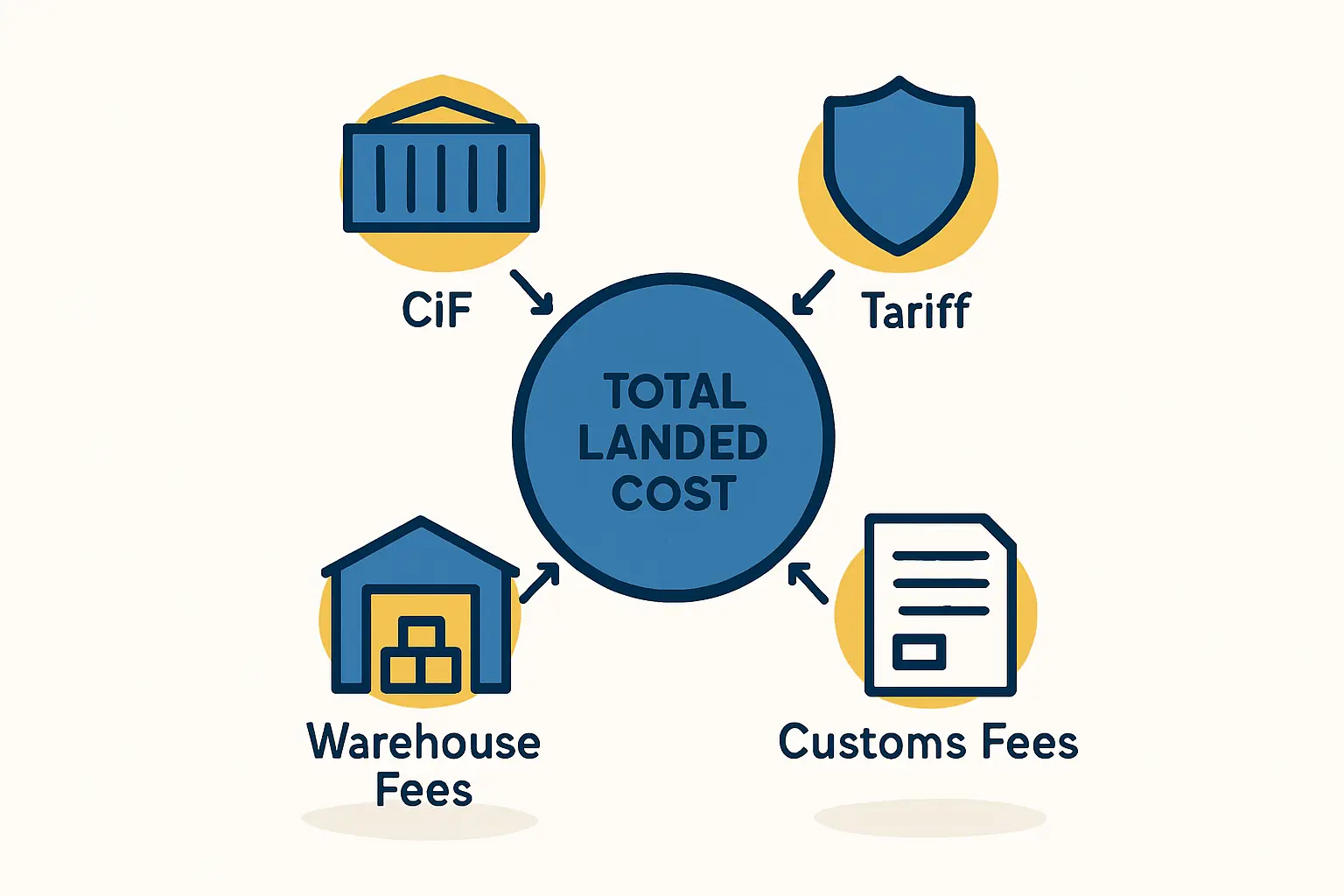
Key Solar Raw Materials and Their Import Classifications
The cost of importing goods is determined by their classification under the Harmonized System (HS), a standardized international method for classifying traded products. Each product is assigned an HS code, which dictates the applicable tariff rate, known in Bolivia as the Gravamen Arancelario (GA).
For a solar module manufacturer, the most critical raw materials include:
- Solar Cells: The core components of a solar panel, typically classified under HS codes related to photosensitive semiconductor devices.
- EVA (Ethylene Vinyl Acetate) Film: An encapsulant material used to laminate the cells between the glass and the backsheet.
- Solar Glass: Low-iron, tempered glass designed for maximum light transmission and durability.
- Backsheet: A polymeric material that provides electrical insulation and protection for the rear side of the module.
- Aluminum Frames: Extruded aluminum profiles that provide structural integrity to the finished module.
- Junction Boxes: Enclosures containing bypass diodes, attached to the back of the panel to facilitate electrical connections.
While specific HS codes and tariff rates can change, investors should budget for a GA that typically ranges from 5% to 15% for these industrial components. Nearly all imports are also subject to a Value Added Tax (Impuesto al Valor Agregado – IVA) of 14.94%, calculated on the customs value plus other duties.
Calculating the True Landed Cost: Beyond the Purchase Price
A common planning error is to equate the supplier’s price with the material’s final cost. The “landed cost” provides a far more accurate picture for financial modeling, as it represents the total cost of a product once it has arrived at the factory door.
The calculation generally includes:
- Cost of Goods (FOB Price): The price paid to the material supplier.
- International Freight & Insurance (CIF): The cost to transport the goods to the port of entry.
- Import Duties (Gravamen Arancelario – GA): The tariff based on the product’s HS code.
- Value Added Tax (IVA): Calculated on the CIF value plus the GA and other charges.
- Customs Broker Fees: Fees paid to the Agente Despachante de Aduana for handling the clearance process.
- Local Logistics: Costs for port handling, warehousing, and transportation from the customs warehouse to the factory.
Failing to account for these cumulative costs can understate material expenses by 20-35% or more, significantly impacting projected profitability. This same landed cost calculation is also crucial when planning for the cost of solar manufacturing equipment.
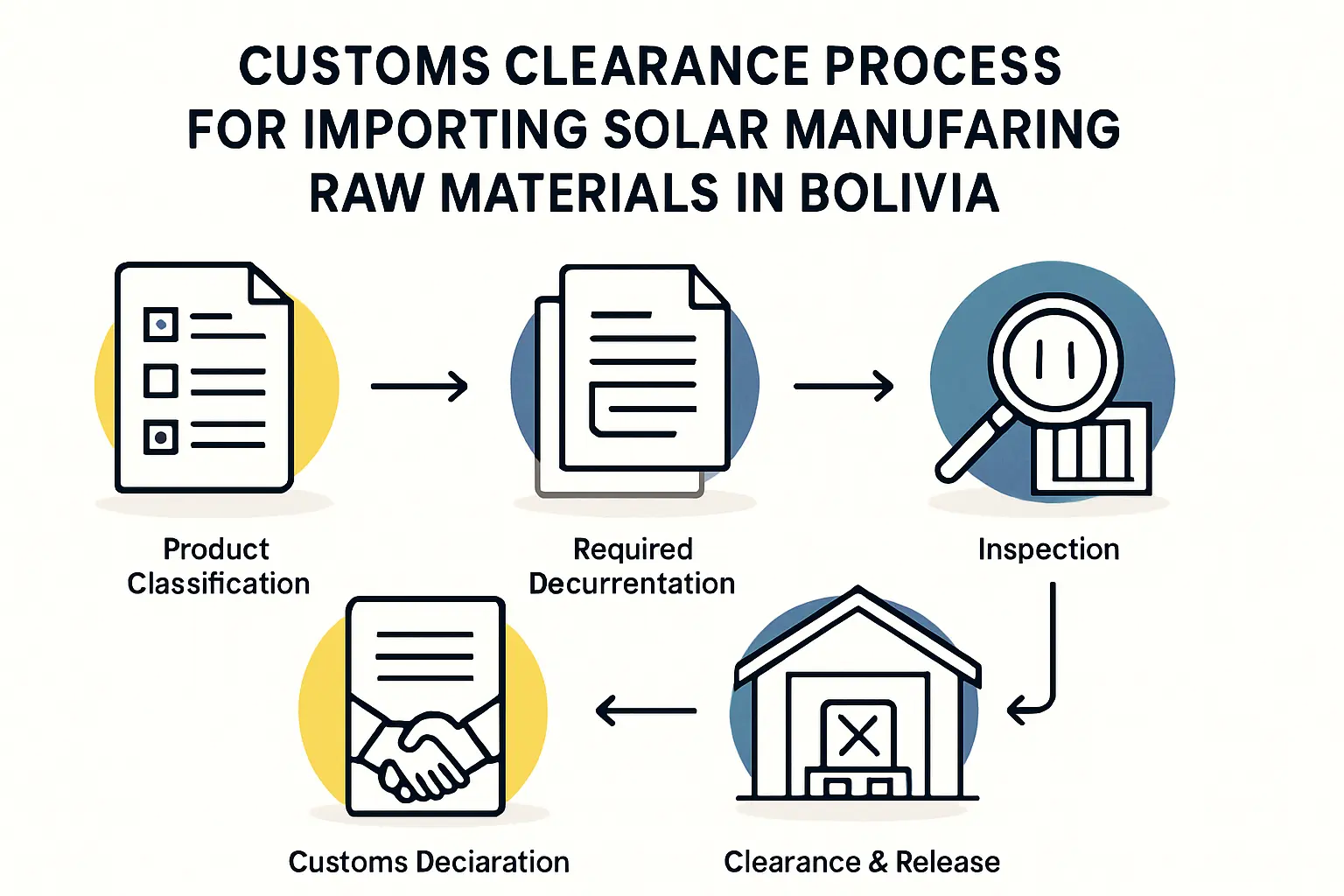
The Customs Clearance Process: A Step-by-Step Overview
Navigating the customs process efficiently requires meticulous preparation and a reliable local partner. For most commercial import operations in Bolivia, using a licensed customs broker (Agente Despachante de Aduana) is mandatory.
The typical workflow is as follows:
- Pre-Arrival: The supplier sends all necessary shipping documents, including the Commercial Invoice, Bill of Lading (or Air Waybill), Packing List, and Certificate of Origin. Accuracy is paramount, as discrepancies can lead to significant delays.
- Goods Arrival & Declaration: Upon arrival at the port or border, the customs broker prepares and submits the official import declaration (Declaración Única de Importación – DUI) to the Aduana Nacional system.
- Customs Channel Assignment: The system randomly assigns a clearance channel:
- Green Channel: Goods are released after documentary review and payment of duties.
- Yellow Channel: Requires documentary review only.
- Red Channel: Requires both documentary review and a physical inspection of the goods.
- Payment of Duties & Taxes: The importer must pay the calculated GA, IVA, and any other applicable fees.
- Release of Goods: Once all requirements are met and payments are confirmed, customs issues a release order. The goods can then be loaded for domestic transport.
The entire process, from goods arrival to release, can take anywhere from 7 to 21 days, assuming all documentation is in order. Any issues with paperwork or physical inspections can extend this timeline considerably.
Potential Incentives and Regulatory Considerations
The Bolivian government has shown interest in promoting renewable energy through legislation like Law No. 1205, which aims to encourage its generation and use. Investors should conduct thorough due diligence to determine if these laws or other industrial promotion policies offer tariff reductions or exemptions for importing raw materials and machinery for renewable energy manufacturing.
Engaging with local legal and business consultants is highly recommended to explore these potential advantages. A partner providing a turnkey solar module production line often has experience navigating these regulatory environments as part of their project delivery service—a valuable asset for any investor. For example, experience from J.v.G. turnkey projects shows that early-stage consultation on these matters can prevent costly oversights.
Frequently Asked Questions (FAQ) for Investors
Q: Do I need a customs broker in Bolivia?
A: Yes, for most commercial imports, using a licensed customs broker (Agente Despachante de Aduana) is mandatory. They act as the legal intermediary between the importer and the National Customs authority.
Q: How long does customs clearance typically take?
A: A realistic estimate is between 7 and 21 days from the arrival of the goods at the customs zone. This can vary based on the assigned channel (Green, Yellow, or Red) and the accuracy of the submitted documentation.
Q: Can I pay import duties in US Dollars?
A: Import duties and taxes must be paid in the local currency, Bolivianos (BOB). Importers must plan for currency conversion and manage any potential exchange rate fluctuations.
Q: Are there free trade zones in Bolivia that can benefit a solar manufacturer?
A: Bolivia has several free trade zones (Zonas Francas). Using one can offer advantages, such as deferring duty payments until goods enter Bolivian customs territory. A detailed analysis is required to determine if this structure is beneficial for a specific manufacturing operation.
Q: How do unstable exchange rates affect import costs?
A: Fluctuations in the exchange rate between the currency of purchase (e.g., USD) and the Boliviano can impact the final landed cost. This financial risk should be monitored and managed within the business’s overall financial strategy.
Conclusion: Integrating Import Strategy into Your Business Plan
The process of importing raw materials is a strategic function, not an administrative afterthought. For any entrepreneur planning to establish a solar module factory in Bolivia, building a detailed and realistic import cost model is essential to the long-term success of the venture.
The key takeaways are to engage a professional customs broker early, meticulously prepare all documentation, and calculate the full landed cost for every component. By treating logistics and customs clearance with the same rigor as production and sales, a business can build a predictable, resilient, and ultimately more profitable manufacturing operation.
For those just beginning this journey, structured educational resources like the e-courses from pvknowhow.com can help build the foundational knowledge needed for comprehensive project planning.

